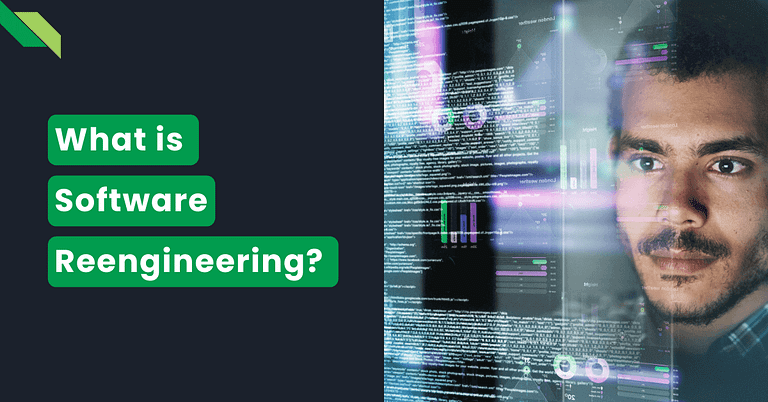What do you know about software reengineering? Even if you developed the best software of the era, you can still reengineer this to be something much better. Learn what reengineering is, why your software needs it, and how it is done.
So what would you do if you created something and you think that it is in its most perfect form? Should you just stop there? Should you improve it anyway? You may prefer to say ‘Yes’ which is not bad at all. However, in the technological world, it is not easy to just stop.
In a fast and constantly changing industry, your business needs to keep up, accelerate even. As far as satisfaction goes, it would be a waste to stop your pursuit to be better. So when you feel like you’ve already engineered a good software, platform, or business, what should you do next? Simple: REENGINEER!
Let’s Talk about Software Engineering
Before we begin discussing software reengineering, let us get to software engineering first.
Software engineering is a discipline of engineering that is concerned with the design, development, testing, maintenance, and deployment of a software product. These preceding aspects are part of the Software Development Life Cycle (SDLC) that a software undergoes before it is launched for clients and users. With that information, let’s go back to the most integral question: What is reengineering?.
Software Reengineering is the process of updating software. This process includes developing additional features on the software and adding functionalities for better and more efficient software. As far as the definition goes, this process also entails that the software product will have improved maintainability.
Thus, reengineering is a step towards continuous improvement of software for better development and customer experience. Additionally, it is a way to make existing products improve their service.
Why is there a Need for Software Reengineering?
The need for software reengineering becomes an integral part of improving the quality of your products. This process adds more value to your business as it does not only better your services but also contributes added revenue.
Software reengineering is a cost-effective method for software development. Why? This process allows you to discover unnecessary elements implemented in your current software and remove them from the system.
By doing this, you minimize the costs (time, financial, direct, indirect, etc.) that are incurred. If a client needs a product you already have but requires added features, you may only have to reengineer the existing one to maximize development efficiency.
In relation to cost-saving, this process also makes your products easier to maintain. Being able to re-inspect your software can help point out several missteps in the current implementation.
This allows the development team to decide on enhancing procedures of the development. This, therefore, makes the maintenance duration of your software development life cycle much easier to execute and sustain.
How is Software Reengineering Done?
The Software Reengineering process basically undergoes three main phases. These are (1) reverse engineering, (2) restructuring, and (3) forward engineering.
1. Reverse Engineering
A simple Google search would tell us that reverse engineering is “the reproduction of another manufacturer’s product following a detailed examination of its construction or composition”. However, it is not only limited to applying this process to another manufacturer’s product but also to your own.
This is done by thoroughly analyzing and inspecting the system specifications and understanding the existing processes. Systematically, reversing the software development life cycle of software implementation best fits this procedure as it ordinally unravels each layer from a higher level to lower-level views of the system.
2. Restructuring
Once the reverse engineering is done and the appropriate specifications are identified, restructuring is performed. Restructuring deals with rearranging or reconstructing the source code and deciding whether to retain or change the programming conventions.
Still, this shouldn’t impact the existing functionalities of the software. Instead, this process enhances them for more reliable performance and maintainability.
Another part of this procedure is the elimination or reconstruction of the parts of the source code that often cause errors in the software (may also be debugging).
Aside from that, eliminating obsolete or older versions of certain parts of the system (such as programming implementation and hardware components) should keep the system updated.
3. Forward Engineering
The flow ends with forward engineering. This is the process of integrating the latest specifications based on the results of the evaluations from reverse engineering and restructuring.
In relation to the entirety of the process, this is defined relative to reverse engineering, where there is an effort to build backward, from a coded set to a model, or to break down the process of how software was integrated.
There is no specific SDLC model to follow in software reengineering. The model will always depend on what fits best with the environment and implementation of your product.
However, like software engineering, this is a systematic development that involves processes within processes and requires thorough inspection for seamless results.
Where can I find people to work on Software Reengineering projects?
Many IT companies have now grasped the concept of software reengineering as they do software engineering. On the client’s side, many small to medium businesses resort to offshoring this process to other countries with much lower costs and pay rates.
Offshoring is the expansion of your company’s (or part of your company’s) operations to another country. This comes with the intention to save costs, minimize training, gain more profit, and access the global IT industry market with lesser supervision but full control.
Find Software Engineers at Full Scale
Full Scale is a roster of talented individuals who works hard in producing quality output through our range of development services. We achieve this through our Guided Development program where our clients are in control of the projects while we take care of the rest.
With a pool of software development teams experienced in different programming languages, our company is more than ready to take on projects. We can help you with the development of any software system you want for your business.
Our employees are experts in the field of software engineering and various SDLC models, working on software reengineering will come in handy. One advantage when engaging in the offshore business, such as Full Scale, is the retainers of our services with minimal costs for you.
Software development and maintenance teams are expensive to put under a business’s vertical but in offshoring this part of your business, you can save a lot of costs.
Other than software development, Full Scale also offers other services that help startups grow in the digital world. These services include web and mobile application development, search engine optimization, graphic design, business consultancy, and content writing.
What could you possibly be waiting for? Book a FREE CONSULTATION with Full Scale right now!



